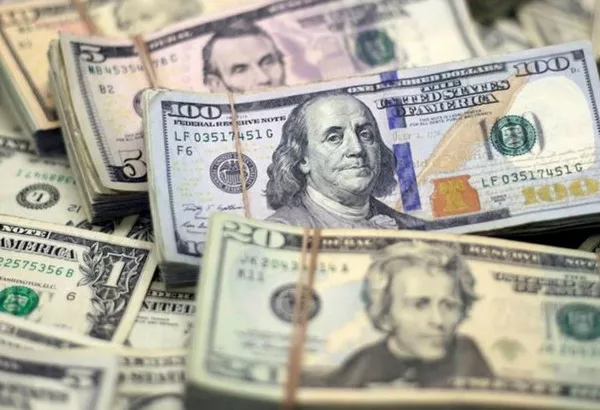The United States ten-dollar bill ($10) is a denomination of U.S. currency. The obverse of the bill features the portrait of Alexander Hamilton, who served as the first U.S. Secretary of the Treasury. The reverse features the U.S. Treasury Building. All $10 bills issued today are Federal Reserve Notes.
As of December 2018, the average life of a $10 bill in circulation is 5.3 years before it is replaced due to wear.Ten-dollar bills are delivered by Federal Reserve Banks in yellow straps.
The source of the portrait on the $10 bill is John Trumbull’s 1805 painting of Hamilton that belongs to the portrait collection of New York City Hall. The $10 bill is unique in that it is the only denomination in circulation in which the portrait faces to the left. It also features one of two non-presidents on currently issued U.S. bills, the other being Benjamin Franklin on the $100 bill. Hamilton is also the only person not born in the continental United States or British America (he was from the West Indies) currently depicted on U.S. paper currency; three others have been depicted in the past: Albert Gallatin, Switzerland ($500 1862/63 Legal Tender), George Meade, Spain ($1,000 1890/91 Treasury Note), and Robert Morris, England ($1,000 1862/63 Legal Tender; $10 1878/80 Silver Certificate).
Alexander Hamilton: A Brief Biography
Born in the West Indies in 1755 or 1757 (the exact year is uncertain), Alexander Hamilton was orphaned at an early age and grew up in poverty. Despite these challenges, he proved to be a gifted student, and by the age of 14, he was working as a clerk for a local merchant. Recognizing his potential, community leaders raised funds to send him to America to further his education.
In 1773, Hamilton arrived in New York City and enrolled in King’s College (now Columbia University). He quickly distinguished himself as a brilliant thinker and writer and became involved in the revolutionary movement that would eventually lead to American independence from Great Britain.
During the Revolutionary War, Hamilton served as an aide-de-camp to General George Washington and was instrumental in helping to secure several key victories against the British. After the war, he became a leading advocate for a strong central government and played a key role in the drafting and ratification of the U.S. Constitution.
As Secretary of the Treasury under President George Washington, Hamilton developed a comprehensive plan to establish the financial stability of the new nation. His policies included the creation of a national bank, the assumption of state debts by the federal government, and the establishment of tariffs to protect American industry.
Despite facing significant opposition from political rivals, Hamilton’s policies were largely successful and laid the foundation for the economic success of the United States in the years to come. However, his controversial personal life, which included a notorious affair and eventual duel with Vice President Aaron Burr, ultimately led to his downfall.
Hamilton’s Legacy
Today, Alexander Hamilton is remembered as one of the most influential figures in American history. His contributions to the creation of a strong central government and a stable financial system helped to shape the United States into the global superpower it is today.
Hamilton’s legacy extends beyond his political achievements, however. He was also a prolific writer and thinker, and his ideas on economics, government, and society continue to be studied and debated by scholars around the world.
In recent years, Hamilton has become even more widely known thanks to the hit Broadway musical that bears his name. Lin-Manuel Miranda’s “Hamilton” tells the story of the founding father in a fresh and innovative way, combining hip-hop music with historical drama to create a truly unique theatrical experience.
Conclusion
So, who’s on the $10 bill? The answer is Alexander Hamilton, a man who played a crucial role in shaping American history and whose ideas and legacy continue to influence our society today. Whether you’re a fan of his rap battles on Broadway or a scholar studying his economic theories, there’s no denying the lasting impact of this remarkable individual.
3293,


